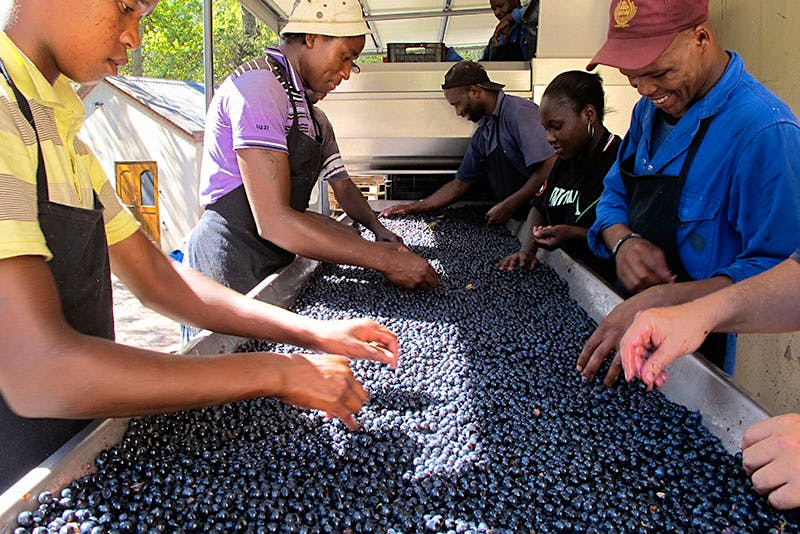Harvest 101: The Basics of Crush Season (Wine Spectator)

Sports teams have playoffs. Students have finals. And for winegrowers, the big event the whole year’s efforts have led up to—is harvest. The period culminating in grape crush begins when the grapes start to change color in mid to late summer.
The actual picking of the grapes usually happens between August and November above the equator and February to April below. What happens in between is the greatest determinant of a wine’s quality in a given vintage. Read on to learn about the processes—and perils—of harvest season.
The Metamorphosis—Veraison
Grape ripening begins with the growth period known as veraison, when the fruit hanging on the vines transforms from small, green, hard berries into what we recognize as grapes. Vines enter this stage about 30 to 70 days, depending on variety and climate, after fruit set (when fertilized flowers have fallen off and become tiny grape bunches)—typically in July or August in the Northern Hemisphere and January or February in the Southern.
During veraison, the grapes lose their bright green color and begin to take on mature hues—from greenish yellow for some white varieties to red, purple or almost black for red varieties. The grapes also soften and rapidly increase in size as the vine begins to pump sugars into the fruit, while acidity starts to decrease. Veraison doesn’t happen at the same time throughout a vineyard, or even for all grapes on a vine or within an individual bunch; those exposed to more sun and warmth get a head start on the grapes in shadier, cooler areas.

